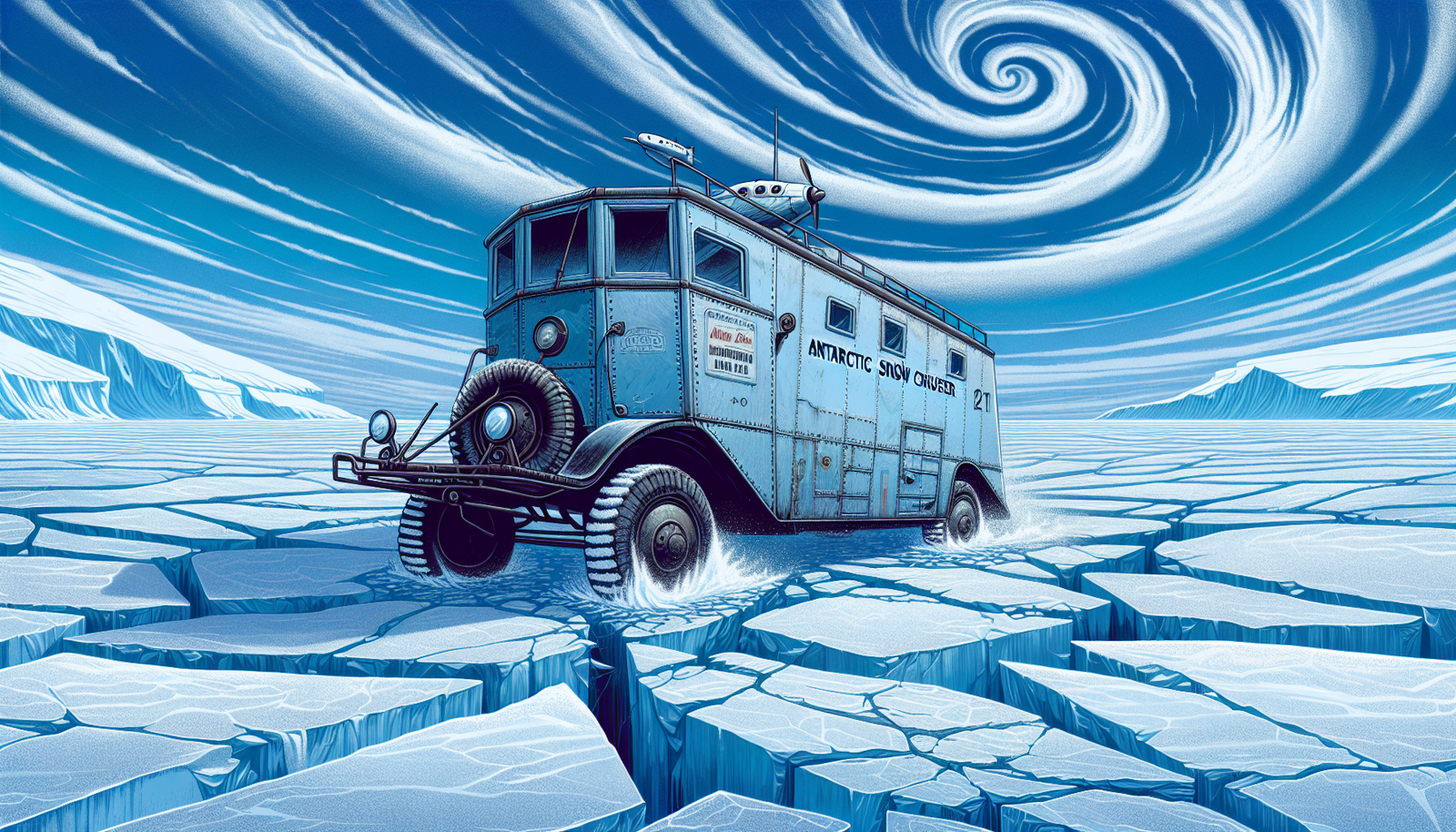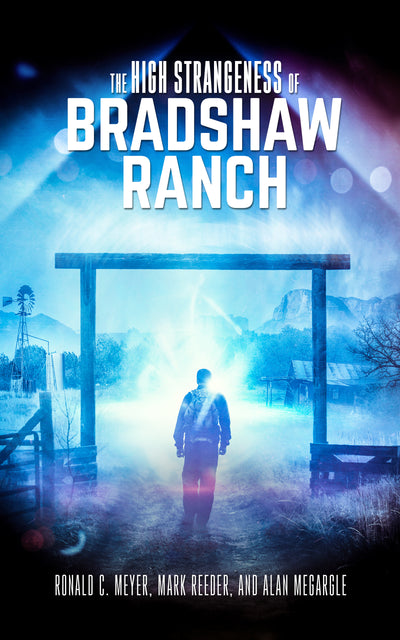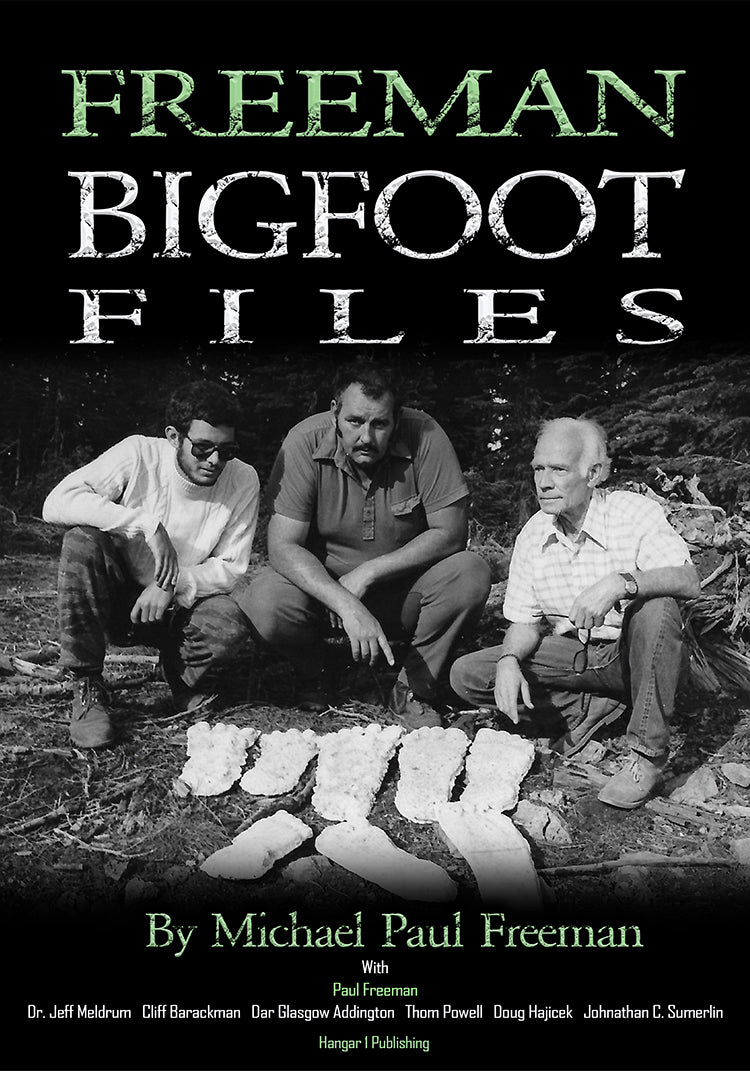Secret Antarctica Bases: Fact or Fiction?

By Elaine Westfield, Ufologist
Antarctica. Just the name conjures images of blinding white ice, howling winds, and an isolation so profound it feels almost otherworldly. It’s Earth's final frontier, a continent nearly twice the size of Australia, 99 percent smothered under colossal ice sheets. This vast, frozen desert, the coldest and driest place on the planet, holds incredible scientific value, harbouring secrets about our planet's climate, geology, and even the potential for life in extreme environments. Yet, its very remoteness and the sheer scale of its unexplored territories make it a fertile ground for speculation, a blank canvas onto which we project our wildest theories. Hidden beneath those miles of ice, could there be something more than just ancient rock and subglacial lakes? Could there be… secret bases?
It’s a question that refuses to fade away, echoed in internet forums, documentary whispers, and conspiracy theories that span decades. We hear tales of clandestine Nazi redoubts, crashed UFOs, alien collaborations, and underground bunkers built by the global elite. But are these stories just modern myths born from the cold, or is there a kernel of truth buried beneath the ice? Our journey today is to sift through the layers of history, rumour, and scientific fact surrounding the persistent idea of Secret Antarctica Bases. We’ll trace the origins of these narratives, examine the evidence – and the conspicuous lack thereof – and explore why this frozen continent continues to capture our imagination in such extraordinary ways. From the echoes of World War II to the high-tech scrutiny of satellite imagery, let's navigate the intriguing landscape where fact and fiction collide at the bottom of the world.
The Shadow of the Swastika: Unpacking the Nazi Antarctica Narrative
You can’t talk about secret Antarctic bases for long without bumping into the Nazis. It’s a persistent, almost foundational, element of the entire mythology. The story usually begins, perhaps surprisingly, with a kernel of historical fact: the Third German Antarctic Expedition of 1938-1939. As World War II loomed, Nazi Germany, concerned about Allied dominance in whaling (a key source of fat for margarine and soap, crucial commodities at the time) and eyeing territorial claims, dispatched the vessel *MS Schwabenland* on a secret mission. Led by Captain Alfred Ritscher, the expedition sailed from Hamburg in December 1938.
Their mission? To survey a slice of Antarctica – specifically within Norway's claimed Queen Maud Land – and stake a German claim, naming it *Neuschwabenland* (New Swabia) after their ship. Equipped with two Dornier Wal seaplanes launched by catapult, the crew spent about a month in the vicinity (arriving in January 1939 and leaving in February). They conducted numerous photographic survey flights, covering hundreds of thousands of square kilometres, and dropped aluminium darts embossed with swastikas to mark the territory. They even spotted the ice-free Schirmacher Oasis from the air.
Now, here’s where history ends and the wild speculation begins. The official records and subsequent historical analysis, like the meticulous work by Colin Summerhayes and Peter Beeching published in *Polar Record*, are clear: the expedition was brief, focused primarily on aerial reconnaissance for a potential whaling station, and never established any kind of permanent settlement, let alone a fortified base. Germany’s territorial claim was quietly dropped after their defeat in 1945.
But facts rarely deter a good conspiracy theory. Shortly after the war, the narrative of a secret Nazi Antarctic sanctuary took flight, largely propelled by figures like Ladislas Szabo. In 1947, Szabo published "Hitler is Alive," claiming that not only had Hitler survived, but he’d been whisked away via a "phantom convoy" of U-boats, first to South America, and then onward to a sprawling, high-tech underground base in Neuschwabenland, dubbed "New Berchtesgaden." According to this tale, these U-boats weren't just transporting personnel; they were part of a continued effort to develop *Wunderwaffe* – wonder weapons – perhaps even the flying saucer-like craft allegedly encountered by Allied forces later.
The appearance of two real German U-boats, U-530 and U-977, seeking surrender in Mar del Plata, Argentina, months *after* Germany’s capitulation in May 1945, added potent fuel to this fire. Surely, the theorists argued, this was proof of clandestine Antarctic voyages? However, thorough interrogations of the crews by Argentine, US, and UK naval personnel revealed a more mundane reality: the U-boats had been at sea when the surrender occurred (one off New York, the other off Norway) and had undertaken long, slow journeys to Argentina to avoid capture, conserving fuel and submerging during the day. There was simply no time, nor logistical capability, for a detour to Antarctica, let alone establishing or supplying a base there.
Think about the sheer impossibility. Building a functional, let alone advanced, base 250km inland across treacherous, uncharted ice, defended by UFOs? Even the *Schwabenland* expedition itself, with its limited month-long window, barely had time for its aerial surveys. Its seaplanes couldn't land on ice, and the crew lacked the heavy equipment, sled dogs, or motorised transport used by experienced polar explorers like Scott or Amundsen just to build basic huts near the coast. Furthermore, constructing a base capable of housing hundreds, developing advanced technology, and requiring regular submarine resupply runs? This demands resources and logistical feats far beyond what was feasible, especially under the noses of Allied patrols like Britain's Operation Tabarin (which began in 1943 specifically to monitor the region and assert British claims, partly *because* of Axis activity elsewhere). And let’s not forget the environment: attempting under-ice navigation or surface landings amidst winter sea ice extending hundreds, sometimes over a thousand, kilometres from the coast, in 24-hour darkness and crushing cold, would have been suicidal for the U-boats of the era. Their operational depth limits were also far shallower than the 500 meters sometimes cited in fanciful "instructions" to reach subterranean realms. The Nazi Antarctic base, despite its enduring presence in popular myth, crumbles under the weight of historical fact and logistical reality.
Operation Highjump: A Veil of Secrecy and Airborne Encounters?
If the Nazi narrative laid the groundwork, then U.S. Navy Operation Highjump poured gasoline on the fire. Launched in the Antarctic summer of 1946-47, this was no small scientific foray. Led by the already legendary polar explorer Admiral Richard E. Byrd, Highjump was the largest Antarctic expedition mounted up to that time, possibly ever: 4,700 men, 13 ships (including an aircraft carrier), and dozens of aircraft. Its official goals were multifaceted: establish the Little America IV research base, train personnel and test equipment in frigid conditions (a clear nod to Cold War anxieties), perform aerial mapping, extend U.S. sovereignty claims, and conduct broad scientific investigations.
However, the sheer military scale of Highjump immediately sparked questions. Was this truly just about science and training? Conspiracy theorists latched onto the operation, reframing it as a thinly veiled military assault. The target? That persistent phantom: the secret Nazi base in Neuschwabenland, possibly fortified with advanced, perhaps even extraterrestrial, technology. Some versions of the story claim the U.S. knew about the Nazi holdouts and sent this massive force to wipe them out.
This narrative gained significant traction thanks to alleged statements attributed to Admiral Byrd himself. Whispers and purported diary entries speak of Byrd encountering mysterious, incredibly fast "flying saucers" during the expedition, capable of flying "pole to pole at incredible speeds." Some accounts, like those amplified by authors such as David Hatcher Childress, escalate this into a full-blown "battle," suggesting Highjump forces were actually engaged and repulsed by these advanced flying craft, forcing an early withdrawal. A mistranslated quote from a Chilean newspaper interview in March 1947, where Byrd warned of the possibility of enemy aircraft flying *over* the poles to attack the U.S., was twisted into an admission of encountering flying saucers *at* the pole.
But how does this dramatic tale hold up against the records? Not well. While Highjump did end earlier than planned, this was attributed to the approaching Antarctic winter and deteriorating weather conditions, particularly challenging sea ice – a common reality for Antarctic operations that often start late and face unpredictable conditions. The documented casualties weren't from combat; tragically, three airmen died in a plane crash ("George 1") during a blizzard while attempting reconnaissance, and another man died in a cargo unloading accident. Survivors of the crash, like James H. Robbins and William Kearns, made no mention of being attacked by hostile aircraft. Their accounts describe battling a fierce storm and struggling with a heavily fueled, overloaded aircraft before the crash.
And what of Byrd's supposed confirmation of a "hollow earth" or a lush land beyond the pole, sometimes linked to these encounters? Despite extensive searching through Byrd’s actual diaries and papers by historians and archivists (as detailed by Raimund E. Goerler regarding the Byrd Polar Research Center Archives), no such corroboration has ever been found. His famous interview quote about "an area as big as the United States that's never been seen by a human being... beyond the pole on the other side of the South Pole from Little America" almost certainly refers to the vast, unexplored *surface* interior of the Antarctic continent itself – a statement entirely consistent with the state of exploration at the time. While Operation Highjump operated under military command and had strategic implications, the claims of battles with Nazi UFOs and gateways to hidden worlds remain firmly in the realm of unsubstantiated fiction.
Beyond the Nazis: Evolving Theories of Secret Antarctic Bases
While the shadow of the Third Reich still looms large over many Antarctic mysteries, the theories about secret bases haven't stood still. They've evolved, incorporating new elements – ancient civilizations, alien visitors, and even the clandestine activities of today's super-rich.
Ancient Civilizations and Lost Lands
One thread winds back into deep history, suggesting Antarctica might hold the remnants of legendary lost lands like Atlantis or Lemuria, submerged or frozen when the continent shifted and iced over millenia ago. Proponents sometimes point to ancient maps, most famously the Piri Reis map of 1513, as potential proof. Does this Ottoman-era chart depict Antarctica's coastline *before* it was covered in ice, hinting at knowledge passed down from a forgotten seafaring civilization? It's an intriguing idea, but map scholars generally disagree, suggesting the map's southern landmass is likely a representation of South America distorted to fit the parchment, or based on contemporary speculation about a great southern continent, rather than accurate ancient cartography of Antarctica.
The Alien Factor
Then there's the alien factor, a powerful element in modern Antarctic lore. Have you seen those grainy satellite images showing odd geometric shapes or strange symmetrical patterns on the ice? To some, these aren't natural formations but smoking guns – evidence of crashed UFOs, entrances to underground alien cities, or facilities built by extraterrestrials. Add to this the dramatic accounts of supposed "whistleblowers" – individuals claiming to have worked on the continent and witnessed things far beyond conventional understanding. They speak of vast underground complexes miles beneath the ice, powered by unknown energy sources, housing non-terrestrial spacecraft, and sometimes involving direct, if fleeting, contact with beings from other worlds. Are these peaceful exchanges? Covert collaborations? Or something more ominous? The narratives often include claims of aggressive government cover-ups, restricted airspace (like the supposed "no-fly zone" over the pole, which in reality only mandates a minimum altitude for aircraft near research areas like the Amundsen-Scott South Pole Station to protect air quality for sensitive atmospheric research), and suppressed evidence, all adding to the conspiratorial flavour. Some theorize Antarctica, with its isolation, serves as a perfect hub for a secret space program, a clandestine meeting point for human-alien diplomacy or technological exchange.
Billionaires and the Global Elite
Perhaps the most modern, and distinctly dystopian, twist involves the world’s billionaires. Forget Nazis or aliens – maybe the real secrets involve the global elite. One branch of this theory suggests that ultra-wealthy individuals are pouring money into secret Antarctic expeditions, not just for scientific curiosity, but to unearth world-altering alien technology or mystical artifacts (think the Ark of the Covenant or the Holy Grail, hidden away in the safest freezer on Earth). The ultimate goal? Power, technological supremacy, or perhaps something more fundamental: survival. Imagine luxurious, state-of-the-art underground bunkers, shielded from climate change, pandemics, or nuclear war, where the elite can ride out global catastrophes in self-sufficient splendor, perhaps even studying recovered alien tech in secure labs far from prying eyes.
Taking this a step further, some rumors claim these billionaires aren't just digging; they're *collaborating*. Whispers tell of secret summits held in the Antarctic wilderness, face-to-face meetings between plutocrats and extraterrestrials to negotiate technology transfers, discuss interstellar travel, or even chart the future course of global governance. Why Antarctica? Its remoteness, harsh climate, and unique status under the Antarctic Treaty (which promotes science but prohibits military activity) might offer, as some suggest, a convenient "legal loophole" for activities that would face intense scrutiny elsewhere. Could the frozen continent be transforming into the headquarters for a shadowy "new world order," a place where global power brokers operate entirely off the grid? It's a chilling thought, blending classic conspiracy tropes with contemporary anxieties about wealth inequality and unaccountable power.
The Antarctic Environment: A Natural Stage for Mystery
Part of Antarctica's allure as a setting for secret bases stems from the continent itself. It’s a place of extremes, vast emptiness, and bizarre natural phenomena – a landscape perfectly capable of generating its own mysteries without any help from Nazis or aliens.
Antarctic Pyramids and Geological Formations
Consider the "Antarctic Pyramids." Satellite images reveal stunningly pyramidal peaks poking through the ice, particularly in the Ellsworth Mountains. Their sharp ridges and symmetrical faces certainly catch the eye, sparking theories that these must be artificial structures, perhaps remnants of an ancient civilization or alien markers. However, geologists offer a more grounded explanation: these are nunataks, the tips of mountains buried under the ice sheet, sculpted into their pyramid-like shapes by millions of years of freezing and thawing cycles and glacial erosion. Nature, it seems, is perfectly capable of impressive geometric feats.
Anomalous Readings and Subglacial Lakes
Then there are the unusual energy signatures occasionally detected – anomalous heat sources under the ice or strange electromagnetic readings. While geothermal activity beneath the ice sheet is a known (though not fully mapped) phenomenon, these readings inevitably fuel speculation about hidden alien technology, underground bases humming with power, or even terraforming devices. Similarly, the discovery of hundreds of subglacial lakes, like the massive Lake Vostok hidden over two miles beneath the ice, reveals a hidden world. While scientists are fascinated by the potential for unique microbial life adapted to these dark, high-pressure environments (life *has* been found in samples from Lake Whillans, for instance), imaginations inevitably run wilder: could these hidden lakes conceal entrances to the "inner earth" – the mythical Agartha? Again, the logistical hurdles of reaching such depths, let alone navigating them via submarine as some theories propose, remain immense.
Ice Dynamics and Visual Ambiguities
The ice itself is a dynamic and deceptive medium. It flows, cracks, melts, and refreezes. Massive temporary holes, known as polynyas, can open up in the winter sea ice, sometimes spanning areas the size of New Zealand, driven by complex interactions between ocean currents, wind, and water salinity. While scientifically explained, their sudden appearance can look deeply mysterious. On a smaller scale, meltwater pools on the ice surface, cracks forming concentric rings in frozen ponds, or the way wind sculpts snowdrifts around obstacles can create patterns that, when viewed from space via satellite, might be misinterpreted as artificial structures, entrances, or landing strips. A recent "discovery" of a mysterious "door" in the Antarctic ice on Google Maps, which quickly reignited Nazi base theories, turned out, upon closer inspection, to likely be just a shadowy ice cave or geological feature. Even oddly shaped icebergs, carved by erosion above and below the waterline and then perhaps flipped over, can resemble anything from cruise ships to alien bases to the untrained or overly imaginative eye. Antarctica’s natural processes provide a ready-made backdrop of the strange and unexplained.
The Intersection of the Real and the Alleged: Scientific and Military Presence
It’s crucial to remember that Antarctica isn't entirely empty. Dozens of nations operate scientific research stations across the continent, conducting vital studies on climate change, astronomy, geology, biology, and more. These stations range from large, year-round hubs like the US McMurdo Station or Germany's Neumayer Station III to smaller, summer-only facilities like Kohnen Station (the very site misinterpreted in satellite images as a "buried UFO," when it was actually just the station's overwintering supply convoy vehicles and sledges arranged in a line).
Furthermore, supporting this science often involves military logistics. Operation Deep Freeze, for example, is the codename for the ongoing US military missions providing logistical support – transport, supplies, infrastructure – to the US Antarctic Program. This involves branches like the Air Force and Coast Guard operating ships and aircraft in the region. While their role is support, the visible presence of military assets can sometimes be woven into conspiracy narratives.
History also reminds us that military *interests* have long been intertwined with Antarctic exploration. Britain's Operation Tabarin during WWII, while resulting in valuable scientific work, was initiated partly to counter potential Axis activity and assert British claims against those of Argentina and Chile. Operation Highjump, as we've seen, had explicit military training objectives alongside its scientific ones. There are also real, tangible remnants of past activities – abandoned whaling stations like those on Deception Island or South Georgia, and early exploration or military bases like the British Base A at Port Lockroy (now a museum and post office run by the UK Antarctic Heritage Trust) or the Argentine Base Brown (famous for being burned down in 1984 by a doctor desperate to leave). These sites, steeped in history and often starkly preserved by the cold, contribute to the continent's mystique, but they are known entities, not clandestine operations.
The Antarctic Treaty System itself, established in 1959, plays a complex role. It designates Antarctica as a continent dedicated to peace and science, prohibits military activities and nuclear explosions, and temporarily sets aside thorny territorial claims. It's a landmark achievement in international cooperation. However, some theorists view its emphasis on scientific access and its management by a consortium of nations as a potential smokescreen, a framework that could, paradoxically, allow powerful entities to conduct secret activities under the guise of legitimate research, possibly exploiting its unique legal status.
Finally, the cutting-edge technology required to simply *operate* in Antarctica can add to the air of mystery. Radar that penetrates miles of ice to map the bedrock and discover subglacial mountains (like the Gamburtsevs) or lakes; robust robotic submarines exploring beneath melting glaciers; ice-core drilling retrieving samples hundreds of thousands of years old; highly specialized vehicles and habitats – these are all tools of legitimate science. Yet, to some, these advanced capabilities hint at the *possibility* of even more advanced, hidden technologies being deployed. The actual discovery of Camp Century, an abandoned US Cold War military base buried under Greenland's ice, detected by NASA's ice-penetrating radar, serves as a real-world example that structures *can* be hidden by ice – though it simultaneously highlights the vast difference in scale, purpose, and documented history compared to the fantastical secret bases imagined in Antarctica.
Analyzing the Enduring Appeal: Why Secret Antarctica Bases Capture the Imagination
So, why do these stories about secret Antarctic bases persist, often flying directly in the face of evidence and logical explanation? I think part of the answer lies deep within us, in our fascination with the unknown. Antarctica is the closest thing we have on Earth to another planet – vast, hostile, largely unexplored, and governed by forces beyond our everyday experience. It’s a place where the normal rules seem suspended, making it the perfect projection screen for our hopes, fears, and wildest imaginings about hidden histories, alien life, and powerful conspiracies. Lost cities, advanced technologies, shadowy groups pulling the strings – these are archetypal narratives, and Antarctica provides the ultimate blank canvas.
There’s also often a deep-seated distrust of authority at play. Many conspiracy theories, not just those about Antarctica, tap into a feeling that "they" – whether governments, militaries, or unseen elites – are hiding crucial truths from the public. Every official denial, every scientific explanation debunking a sensational claim, can be twisted by believers into further "proof" of a cover-up. The very difficulty for the average person to visit Antarctica, or to verify claims firsthand, reinforces this sense that something is being deliberately concealed. If you can't see it for yourself, how can you be *sure* what's really going on?
And in our modern, visually saturated world, the power of misinterpreted images is immense. A strange shape spotted on Google Earth, a blurry photograph, an iceberg that looks vaguely like something else – these can instantly go viral, presented as "undeniable evidence." Natural geological formations become pyramids, research stations become UFOs, meltwater pools become hidden entrances. Without context, or sometimes with deliberately misleading framing, these visual anomalies are compelling fuel for speculation. It’s easier, and perhaps more exciting, to jump to an extraordinary conclusion than to investigate the often mundane, if complex, natural or scientific explanation. The enduring appeal lies in that blend of genuine mystery, human psychology, and the visual ambiguities offered by Earth's most remote continent.
Secret Antarctica Bases: Fact, Fiction, or a Blend of Both?
As we pull back from the edge of the world-map, what can we say with certainty about secret bases in Antarctica? Based on the available historical records, logistical analysis, and decades of scientific exploration, the grand, elaborate theories – sprawling underground Nazi cities, active alien transport hubs, luxurious billionaire bunkers staffed by extraterrestrials – appear to belong firmly in the realm of fiction. While real historical events like the 1938 German expedition or Operation Highjump occurred, their purposes and outcomes have been significantly distorted in the popular imagination. The evidence simply doesn't support the existence of these kinds of hidden, technologically advanced installations.
Does that mean Antarctica holds no secrets? Absolutely not. But perhaps the *real* secrets aren't hidden bases, but something far more profound. Beneath the ice lie clues to our planet's deep past, its climate history locked in ancient ice cores. Subglacial lakes harbour unique ecosystems, testing the known limits of life and offering analogues for potential life on icy moons elsewhere in our solar system. The continent itself, with its active volcanoes like Mount Erebus, vast hidden mountain ranges like the Gamburtsevs, and bizarre phenomena like Blood Falls or the "singing" Ross Ice Shelf, is a treasure trove of genuine scientific wonder. These are the secrets scientists *are* tirelessly working to uncover, pushing the boundaries of exploration and technology.
The idea of secret bases has an undeniable power, reflecting our enduring curiosity about the unknown corners of our world and perhaps a touch of anxiety about forces beyond our control. While the evidence points towards natural phenomena and known human activity rather than hidden empires or alien encounters, the vastness of Antarctica ensures that some corners will always remain mysterious, leaving just enough space for the imagination to roam free across the ice.
From Bigfoot to UFOs: Hangar 1 Publishing Has You Covered!
Explore Untold Stories: Venture into the world of UFOs, cryptids, Bigfoot, and beyond. Every story is a journey into the extraordinary.
Immersive Book Technology: Experience real videos, sights, and sounds within our books. Its not just reading; its an adventure.


























